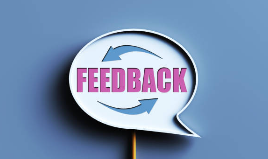
End-of-the-semester student evaluations create mixed feelings. It’s always great to get positive feedback from our students, but it can also be hard to read critical feedback, or of which the meaning of is not clear. We know you work hard to meet the needs of your students, cover the required curriculum, and try out new teaching methods. And we know that it is hard to do all of those things successfully all of the time. That is why we collected these tips to help you prepare for student evaluations and to make them meaningful for you.
Make student feedback part of your course from the beginning
End-of-the-semester student evaluations create mixed feelings. It’s always great to get positive feedback from our students, but it can also be hard to read critical feedback, or if the meaning of the feedback is not clear. We know you work hard to meet the needs of your students, cover the required curriculum, and try out new teaching methods. And we know that it is hard to do all of those things successfully all of the time. That is why we collected these tips to help you prepare for student evaluations and to make them meaningful for you.
Make student feedback part of your course from the beginning
Use the end-of-semester course evaluation questions to survey your students a few weeks into the semester to gauge how things are going in your class. Then, reflect on the results and address feedback accordingly. You can also create your own evaluation survey questions, measuring the aspects you want to focus on this semester. Or consider signing up for a Mid-Sememster Assessment process with a CTL consultant.
Prepare for the evaluation responses
Reflect on which of the evaluation questions are most meaningful to you and which you want to focus on specifically this term. You might even conduct your own self-evaluation using the same questions that students will be asked. Comparing your perspectives to how students experienced the course can help you process potential perception gaps.
Keeping a teaching journal can help you at the end of the term when you are reflecting on your and your students’ experiences.
Let students know that you want their feedback – and why
Make sure that you advertise the evaluation survey to your students and explain why their answers are important to you. This will not only help you to get more student feedback, it will also help direct student feedback in ways that are most meaningful for you.
Review the results systematically
Scan the results for outliers and trends. Ask yourself, “Why might that be? Why might they feel this way? What can I do differently next time? Who can help me with this?” Focus on the most common ratings and comments first and then take note of the ones shared less often. Sometimes, reviewing the results with a colleague or a knowledgeable person outside of your department (e.g., a CTL consultant) can help with prioritizing feedback and making sense of the results.
Find more suggestions on this topic in a Teaching Tip entitled “Using Student Evaluations to Improve Your Teaching” published previously on the CTL blog. And reach out to the CTL (ctl@boisestate.edu) if you would like to speak to a CTL consultant about your course evaluations.